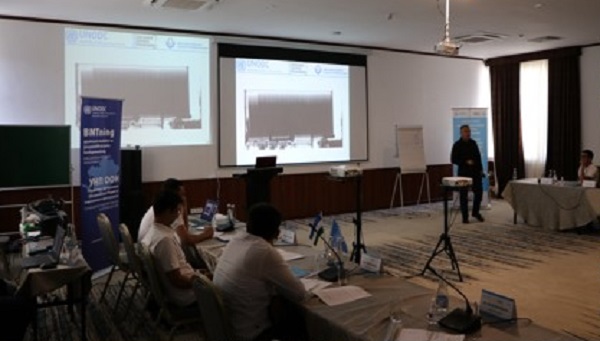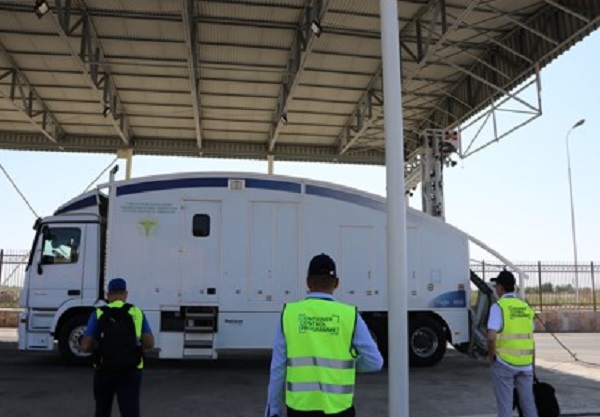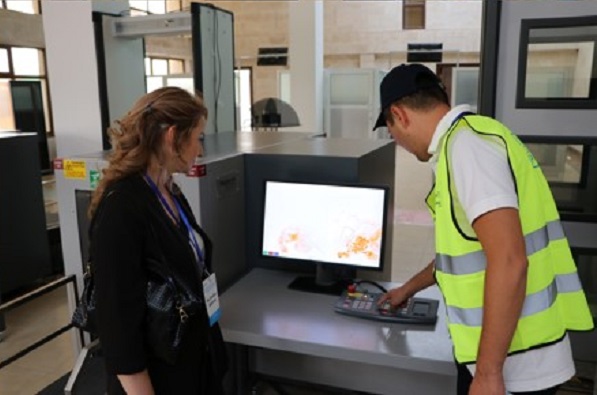UNODC-WCO Global Container Control Programme enhances technical capacities of Port Control Units in Uzbekistan on X-ray image interpretation
The United Nations Office on Drugs and Crime (UNODC) Regional Office for Central Asia has conducted an onsite national advanced practical training on X‑ray image analysis and interpretation on 10-12 August 2021 in Uzbekistan under the UNODC – World Customs Organization (WCO) Global Container Control Programme (CCP).

Eighteen officials of Uzbekistan, including representatives of the National Information-Analytical Center on Drug Control under the Cabinet of Ministers and the State Customs Committee’s (SCC) Head Office, as well as officers from three Port Control Units (PCUs) attended the training.

The course aimed at strengthening the theoretical knowledge and practical capacities of the units based on X-ray image target recognition to analyze the X-ray image after a scan to detect smuggling of prohibited or undeclared goods such as cigarettes, weapons, and drugs in the freight or container.
During opening ceremony, Mr. Batyr Geldiyev, UNODC Regional Programme Coordinator stated that this training is being organized based on the request and needs of Uzbek Customs and is the first CCP national training in Central Asia organized in a face-to-face mode following COVID-19 pandemic.
Due to its technical nature and specificity of the topics, the training was organized in face-to-face format in Bukhara, Uzbekistan, with practical exercise part conducted at "Alat" Customs Post at the border with Turkmenistan.
Aspects of special interest, including the ways of further improvement of an efficiency and effectiveness of the inspection procedures of cargo at customs using X-ray technology were discussed during the training. Current inspection procedures in place were reviewed to identify risks, catalogue illegal cargo, and prioritize detection scenarios.

The training topics covered various aspects, including non-intrusive inspections and customs x-ray simulations, issues and perspectives for the X-ray operators, X-ray image recognition, risk profiling related to X-ray image recognition and case studies, as well as health and safety related to Customs control of containers and freight.

During the last day the group visited border crossing point “Alat” – the most significant border crossing point at the border with Turkmenistan and one of the busiest in Uzbekistan. The mechanism of selection of risky shipments based on documentary control and analysis of the X-ray images was demonstrated in real time.

The CCP Regional Segment for Central Asia is funded by the Government of Japan and the U.S. Department of State’s Bureau of International Narcotics and Law Enforcement Affairs (INL) and the Export Control and Related Border Security Program (EXBS).
***
For more information, contact Vasilina Brazhko (Ms.)
UNODC ROCA Communication and PR Specialist at
+996775987817 WhatsApp or Cell phone
vasilina.brazhko[at]un.org